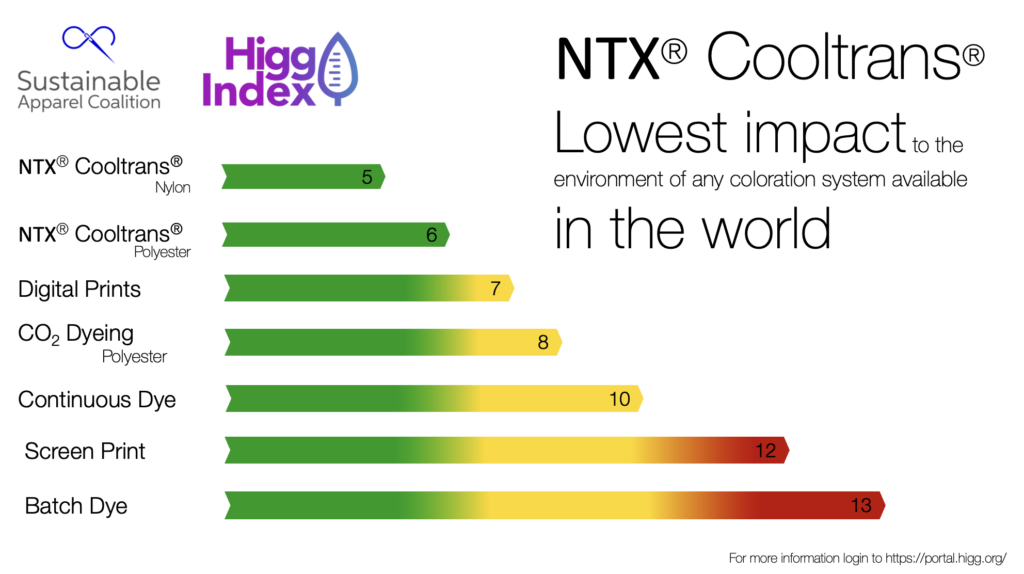Setting the Scene – the Importance of Low Carbon Supply Chains
In the fight against climate change, companies across all industries, and especially those operating in apparel, are increasingly looking for ways to reduce their greenhouse gas emissions. To do so effectively, it’s important for companies to understand where their emissions come from and to measure them accordingly. This is where the concept of Scope 3 emissions comes in.
Scope 3 emissions refer to the indirect emissions that result from a company’s value chain – that is, the emissions that occur as a result of the activities of a company’s suppliers, customers, and other stakeholders. While Scope 1 and 2 emissions – those that come directly from a company’s own operations and energy use – are often easier to measure and control, Scope 3 emissions can account for a significant portion of a company’s total carbon footprint.
That’s where NTX® comes in. NTX® is a low carbon waterless coloration technology company that provides tier 2 services to big brands around the world. Through its NTX® Cooltrans® technology, the company is able to offer a solution that can help big brands lower their Scope 3 emissions and move towards a more sustainable, low carbon supply chain strategy.
The Hidden Culprit: Understanding Scope 3 Emissions for Apparel Brands
For global apparel companies, a significant portion of their carbon footprint comes from Scope 3 emissions. For instance, the production of raw materials like cotton, leather, and synthetic fibers, along with the transportation of these materials to factories, can generate substantial emissions. Furthermore, the processing of the textiles – coloration of the fabric for instance – can have a big impact on the final carbon footprint calculation. Finally, the disposal of products at the end of their life cycle can generate emissions if they are not recycled or disposed of properly.
Reducing Scope 3 emissions can be challenging for apparel companies as they often involve activities outside of their direct control. However, these emissions can have a significant impact on a company’s overall carbon footprint, and it is therefore important for companies to work with suppliers and other partners in their value chain to identify opportunities for emission reduction.
How NTX® Helps Big Apparel Brands Achieve a Low Carbon Footprint
We’ve already covered NTX® Cooltrans® in detail and discussed how dramatically it can reduce water usage and energy usage in the textile coloration process:
- 65% Energy Savings
- 90% Water Savings
- 40% Reduction in Dye Use

We’ve also shared our third party analysis performed by Sustainable Apparel Coalition which grades NTX® Cooltrans® as the lowest impact to the environment of any coloration system worldwide.

The key difference between NTX® Cooltrans® and other top coloration technologies is that it is applicable to almost any type of fabric on the planet without compromise to color fastness or material performance. It is also different in that it can be applied at scale today, not tomorrow.
The Future is Low-Carbon: Conclusion and Next Steps for Companies and NTX’s Supply Chain Solutions
The importance of reducing greenhouse gas emissions in the fight against climate change cannot be overstated. With Scope 3 emissions accounting for a significant portion of a company’s total carbon footprint, it’s crucial for companies to work with suppliers and other partners in their value chain to identify opportunities for emission reduction.
For apparel companies in particular, NTX® offers a promising solution with its low carbon waterless coloration technology. Through its NTX® Cooltrans® technology, the company can help big brands achieve a low carbon footprint by dramatically reducing water and energy usage in the textile coloration process, while also reducing the overall impact on the environment. By working with companies like NTX, apparel companies can take meaningful steps towards a more sustainable, low carbon supply chain strategy.

